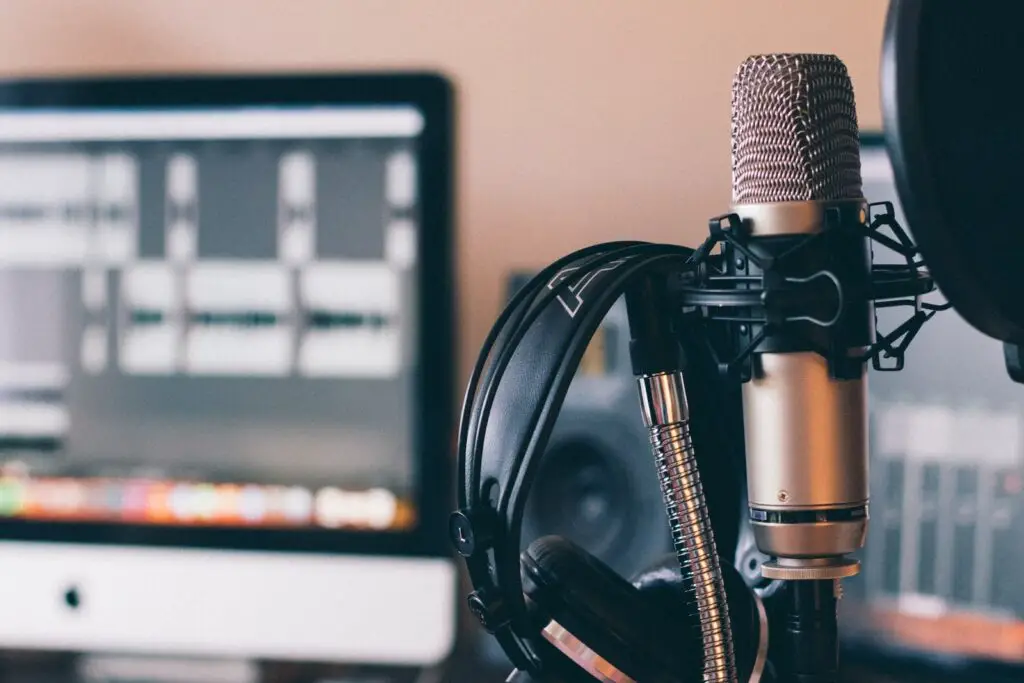With the rise of remote work and virtual meetings, Zoom has become one of the most widely-used video conferencing platforms.
Many users may wonder if using two microphones on Zoom for improved sound quality or hosting multiple people at once in one room is possible.
The good news is that Zoom does support multiple microphones.
One option is to utilize an audio interface that permits connecting multiple microphones to your computer, providing better sound quality and more control over each mic’s settings. Alternatively, a mixer may accommodate multiple mics while providing additional controls like equalization (EQ) and volume adjustments.
However, it’s essential to be aware that using multiple microphones may present challenges, such as audio feedback or difficulty coordinating who speaks when.
You should also consider your computer’s processing power and internet connection bandwidth, which may impact audio quality.
Configuring Multiple XLR Microphones
Multiple microphones can be a valuable tool for improving audio quality during video conferences or Zoom meetings, particularly in larger spaces where a single microphone may not be sufficient.
By using multiple microphones (XLR-based), you can set these microphones as a single device within a Zoom Room, allowing them to be managed all together.
This configuration allows for seamless switching between microphones.
The Zoom Room software automatically detects which microphone needs to be active at given time without needing an external digital signal processor (DSP).
This makes it easier to pick up sounds from different areas of the room and ensures everyone can be heard clearly, without any unnecessary background noise or distortion.
Whether you’re hosting a business meeting or a virtual event, using multiple microphones can help to create a more professional and polished audio experience.
Important Requirements To Set Up Multiple XLR Microphones In A Zoom Room
You will need a Zoom Rooms license, specific microphones such as Audio Technica XU851RO Table Mic, Audix M3 Tri Element Hanging Mic, or Shure MX202 Overhead Mic, and a speaker like QSC Amp with Ceiling Speakers or Samsung Soundbar.
In addition, an audio interface such as Focusrite Scarlett 18|20 or Behringer U-Phoria UMC1820 will also be required.
These prerequisites are essential for the successful configuration of multiple XLR microphones. Combining these components will ensure that the Zoom Room software audio processing can automatically detect which microphone needs to be active at any particular time without needing an external DSP.
Important Steps To Set Up Multiple XLR Microphones In A Zoom Room
- Download and install the Audio Interface drivers on your Zoom Rooms PC/Mac. These drivers are necessary to connect the Audio Interface to your computer.
- Connect Audio Interface to a power source and your Zoom Rooms PC or Mac using a USB cable. This will provide power to the Audio Interface and allow it to communicate with your computer.
- Connect the required quantity or number of XLR microphones to Audio Interface. Make sure that each microphone is properly plugged in and secured.
- On the Zoom Room’s iPad controller, go to Settings and select Microphone. If you have multiple XLR microphones connected, the controller will display “Audio Interface” next to the microphone name. This confirms that the microphones have been detected and are ready to use.
- Ensure that the Software Audio Processing is enabled. This feature automatically detects which microphone need to be active at any given time and provides optimal sound quality for all participants.
By following these steps, you can configure multiple XLR microphones as a single device in your Zoom Room.
This will allow for efficient management and automatic detection of which microphone needs to be active at any given time.
This is particularly useful in larger or medium-sized Zoom Rooms where a single microphone may not be able to detect sounds from all parts of the room.
Which Microphone Is Best For Zoom Meetings?
If you’re looking for a high-quality microphone to enhance your Zoom meetings, there are several options available to you.
There are a few microphones that stand out as the best choices for Zoom meetings.
- Sennheiser SC635
- Stage Right by Monoprice
- Blue Yeti USB microphone
- Apple AirPods Pro 2
- Razer Kiyo webcam and mic
What Could Be The Reason For The Poor Microphone Audio Quality On Zoom?
If your sound quality during Zoom meetings is lacking, one of the easiest ways to improve it is by assessing your microphone’s proximity.
Being too close to the microphone can result in muffled audio and amplify unwanted noises like breathing or saliva sounds.
Therefore, positioning the microphone at a suitable distance from your mouth will prevent these problems.
Doing this will allow for clearer and more audible audio during Zoom meetings, which will enhance the overall meeting experience.
What Are Some Ways To Use Two Microphones In The Same Room?
When using two microphones, it is essential to position them properly for optimal sound quality.
For optimal recording or communication, have the participants face each other directly while placing the microphones in opposite directions.
Furthermore, positioning the microphones in opposite directions prevents any overlap of sound they pick up, decreasing background noise and improving overall clarity.
The direction in which the microphones are placed plays a vital role in sound capture. When the microphones are positioned in opposite directions, they capture sound from different angles.
What Happens When Two Microphones Are Combined?
When two microphones are placed close together on the same frequency, they may interfere and produce poor audio quality.
This phenomenon happens because the receiver is unable to differentiate between various signals.
Consequently, neither signal will come through clearly or accurately when placed close together at that same frequency.
As a result, sound quality will be poor; audio may sound fuzzy, distorted and difficult to comprehend in various contexts such as live performances, studio recordings, video conferencing or podcasting.
What Is The Reason Behind Using Two Microphones?
Using two microphones is a technique to reduce ambient noise during audio recording or communication.
Individuals can cancel out ambient noise from each microphone by combining their outputs at equal gains but opposite polarities.
This technique, known as “noise cancellation,” is commonly employed in high-end headphones and speakers.
Noise cancellation works by capturing sound waves produced by ambient noise with both microphones but at different polarities.
Combining their outputs with opposite polarities allows those waves to be effectively cancelled out for a clearer audio signal.





